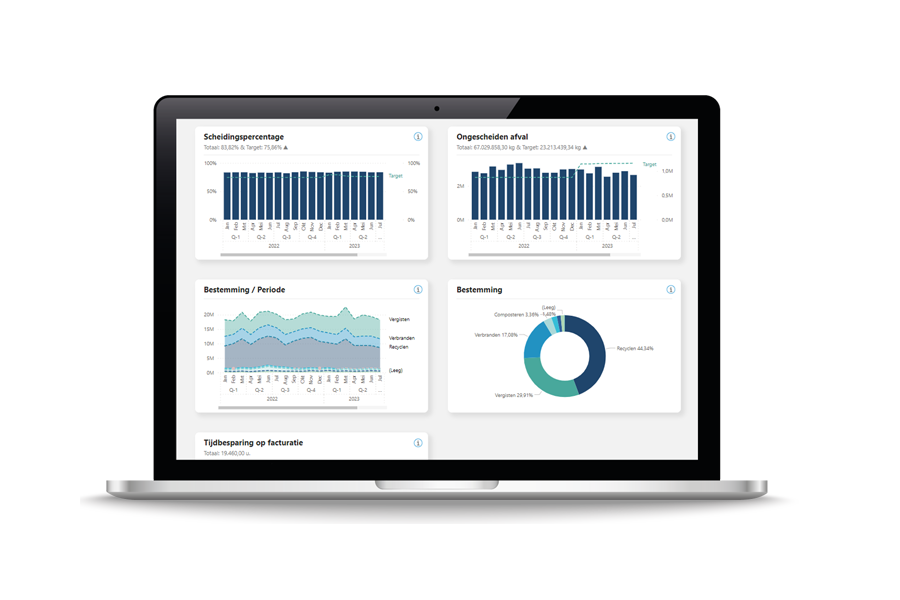Here come two shocking announcements. Our use of resources is the main cause of our climate crisis. And second, if we continue like this, global resource use will have increased by 60% by 2060.
In addition to these two conclusions, the recently released UN commodities report Bend the Trend fortunately offers hopeful scenarios.
This sounds like a threatening message, but is meant as a call to action today. That call applies especially to the Western world: rich countries use six times more resources per capita than other countries. And have ten times more impact on the climate.
The excessive use of resources and materials is in numerous factors:
- Population growth
First, the shortage of resources has a simple cause: the world's population is rising. In 2022, we reached 8 billion on Earth. By 2050, we are heading for 9.7 billion people, although this is being debated. After that, population growth is expected to moderate. But, in Africa and Asia, residents want a jump in prosperity, leading to a growing demand for resources. - Inefficient production processes
Production processes that are inefficient encourage excessive use of raw materials and waste production. In the Netherlands, by the way, we are already doing quite well in this area: in a growing economy, the absolute use of raw materials has declined. Nevertheless, there are ways to further optimize production processes and thereby save raw materials. Examples include the efficient purchase of materials and raw materials for a production process and the optimal adjustment of machines and installations, which means that less energy and materials need to be used. Residual streams can also be reused. Incidentally, the gains in this area start with insight into the material flows within the organization. - Environmental degradation
Due to linear production, materials become worth less after use, or even waste. The contribution of the circular economy to our gross domestic product has been stable for almost 20 years, around 4%. Also, according to the latest Integral Circular Economy Report, in 2020 some 13% of raw materials used in the Dutch economy consisted of recycled materials. That percentage has not changed in ten years. By ambitiously shifting to a circular economy, raw materials and materials can be used again and again in endless cycles. The Netherlands' ambition to become circular by 2050 is fairly unique. - Overconsumption
Overconsumption has been a major cause of increasing resource scarcity for years. While we keep tinkering with the efficiency and possibly circular production side, which entrepreneurs put a lot of time and effort into, there is a big challenge to address the demand side, according to the UN report. For example, the demand in our diet needs to change to less animal-based.
Scarcity of raw materials: risks for business
The increasing scarcity of raw materials, although trends have been discernible over the past year that could make reassuring, or worse, make organizations sit back, has risks for a business.
For example, prices for materials and raw materials may rise, increasing production costs. These costs cannot be passed on directly to customers, putting pressure on margins. Furthermore, delivery times for materials increase, which could potentially lead to production stoppages. Companies may also be at a competitive disadvantage when competitors do have the raw materials they need. These are often the companies that are already working with the circular economy, using reusable or reused streams in their production processes.
In addition, raw material scarcity makes it dependent on foreign suppliers and producers. This is the case with rare earths, for example. Finally, sustainable laws and regulations, or European legal guidelines for reporting, can confront your organization. For example, governments may decide to ban or regulate certain scarce raw materials. And these may be precisely the raw materials that your organization has been using for years.
And if we reason even further, the consequences of raw material scarcity also constitute business risks. Consider the climate change and biodiversity loss caused by resource use. This makes companies extra vulnerable to floods and other extreme weather events, for example.
Hopeful scenario: more with less
Finally, getting down to business. There are hopeful recommendations for dealing with the resource shortage. In short, it boils down to the following principle: we must create more with less. How should we do that?
- Setting targets
First, clear goals must be set that lead to a reduction in the use of raw materials. This requires government policies that encourage sustainable production through incentives. The SGDs also help with this. - Fair pricing
Second, it is important to start charging fair prices for products, which include the environmental impact. This creates a level playing field, encouraging the use of reusable raw materials. - Correct information
Third, honest, transparent and accurate information to consumers is needed to induce them to consume more sustainably. This must be accompanied by government regulations, such as now the ban on single use plastics. The new European reporting directive, the CSRD, helps in creating unambiguous sustainability reports. - Circular production models
Fourth, and there is still much potential for improvement here, circular production and management of products and materials is the way to tackle the shortage of raw materials. For the construction industry in particular, there are plenty of opportunities for the circular economy. By building smarter and more circularly, 25% of material use can be saved. As for our food, there is also much to be gained. Starting with reducing the demand for environmentally harmful food. Then by combating food waste. And by stimulating regenerative agriculture and improving land. This can provide 5% less land needed for food production. For mobility, 50% savings in materials can be achieved by encouraging shared mobility and healthier modes of transportation, among other things.
If these measures are taken together and simultaneously, and we can transform the built environment, mobility and food and energy systems to more circular and sustainable systems, resource demand will have increased "only" by 20% by 2060, instead of 60%. Greenhouse emissions could be reduced by 80%. All the while, to feed the world's growing population, food production will increase by 40%.
More with less with Milgro
Making a move to do more with less? It can be done well. And is also advisable, because it allows you as an organization to cover business risks. Properly managing raw material and material flows starts with insight. We offer this insight with our digital dashboards. Then you can 'manage' flows and look for ways to valorize flows as well as possible and keep them in the chain. Request a demo.
Stay informed
Stay up to date on all new developments? Follow us on LinkedIn or Instagram. Or subscribe to the newsletter. Are you curious about what Milgro can do for your operations and waste process? Contact us











